
Brussels Park is the largest urban public park in central Brussels, Belgium. Formerly known and still sometimes colloquially referred to as the Royal Park, it was the city's first public park, being originally laid out between 1776 and 1783 in a neoclassical style by the French architect Gilles-Barnabé Guimard and the Austrian landscape architect Joachim Zinner, as part of an urban project including the Place Royale/Koningsplein. The area of the rectangular park is 13.1 ha.
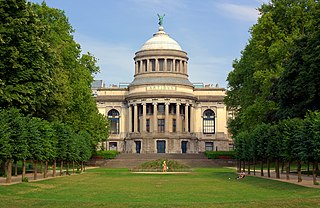
The Royal Museums of Art and History (RMAH) is a group of museums in Brussels, Belgium. It is part of the Belgian federal institute of the Belgian Federal Science Policy Office (BELSPO) and consists of five museums: the Art & History Museum, the Horta-Lambeaux Pavilion, the Halle Gate, the Museums of the Far East and the Musical Instrument Museum (MIM).
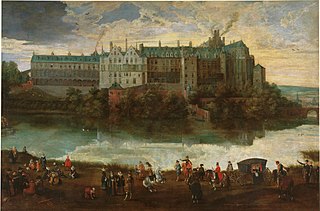
The Palace of Coudenberg was a royal residence situated on the Coudenberg or Koudenberg, a small hill in what is today the Royal Quarter of Brussels, Belgium.

The Royal Museums of Fine Arts of Belgium are a group of art museums in Brussels, Belgium. They include six museums: the Oldmasters Museum, the Magritte Museum, the Fin-de-Siècle Museum, the Modern Museum, the Antoine Wiertz Museum and the Constantin Meunier Museum.

The Academy Palace or Palace of the Academies is a neoclassical palace in Brussels, Belgium. It was originally built between 1823 and 1828 for Prince William II of Orange. Nowadays, it houses five Belgian academies including the Royal Academies for Science and the Arts of Belgium (RASAB). In English, it is also often called the Academy House.

The Mont des Arts or Kunstberg, meaning "Hill/Mount of the Arts", is an urban complex and historic site in central Brussels, Belgium, including the Royal Library of Belgium (KBR), the National Archives of Belgium, the Square – Brussels Meeting Centre, and a public garden.

The Place Royale or Koningsplein is a historic neoclassical square in the Royal Quarter of Brussels, Belgium. Modelled after the so-called French royal square and built between 1775 and 1782, according to a plan of the architects Jean-Benoît-Vincent Barré and Gilles-Barnabé Guimard, to replace the former Palace of Coudenberg, it was part of an urban project including Brussels Park.
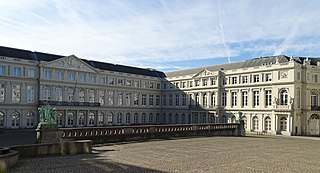
The Palace of Charles of Lorraine is a neoclassical palace in the Royal Quarter of Brussels, Belgium. Its construction started in 1757 to serve as the residence of the Governor of the Habsburg Netherlands, Prince Charles Alexander of Lorraine, replacing the Palace of Orange-Nassau. It currently houses a museum, part of the Royal Library of Belgium (KBR).
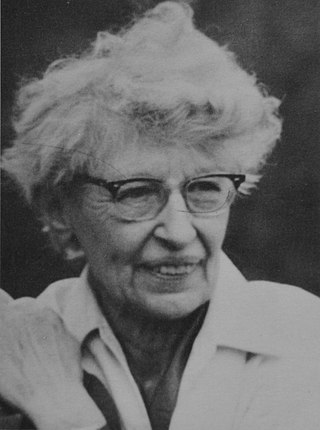
Éliane Georgette Diane de Meuse was a Belgian painter. She was the wife of Max Van Dyck. They met at the Académie Royale des Beaux-Arts, Brussels where they attended the courses of the same professors.
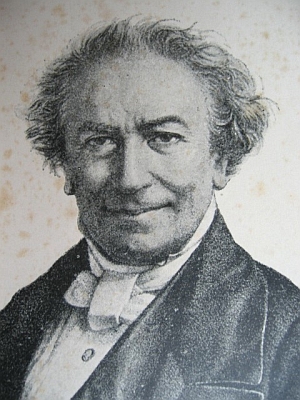
Jean-Baptiste-Ambroise-Marcellin Jobard was a Belgian lithographer, photographer and inventor of French origin. Founder of the first significant Belgian lithographic establishment, the first photographer in Belgium on 16 September 1839, and director of the Musée de l’Industrie de Bruxelles from 1841 to 1861, Jobard played a role, in the artistic, technological, scientific and industrial development of Belgium during the Dutch period and the reign of Leopold I.

The Société d'encouragement pour l'industrie nationale, Society for the Development of National Industry, is an organization established in 1801 to support French industry. Over the years it has provided prizes and support to inventors, promoted transfer of technology and management techniques, sponsored efforts to improve safety and efficiency and reduce pollution, and promoted vocational education.
Events in the year 1835 in Belgium.
Events in the year 1841 in Belgium.
Events in the year 1847 in Belgium.
Events in the year 1857 in Belgium.
The following lists events that happened during 1878 in the Kingdom of Belgium.

The Place des Palais (French) or Paleizenplein (Dutch), meaning "Palaces' Square", is a major square in the Royal Quarter of Brussels, Belgium. Created in 1827, it is, along with the Rue de la Loi/Wetstraat, the Rue Ducale/Hertogstraat and the Rue Royale/Koningsstraat, one of the four thoroughfares surrounding Brussels Park. The square measures 70 by 350 metres and is entirely paved.
The Exhibition of Products of Belgian Industry, also known as the Exhibition of Belgian Industrial Products or simply the Belgian Industrial Exhibition was a national exhibition that took place in Belgium, devoted solely to the products of the national industry. The Belgian industrial exhibitions were held between 1830 and 1856.

Auguste De Hemptinne was a Belgian pharmacist and industrialist.
Frédéric Basse was a Belgian politician and industrialist.














